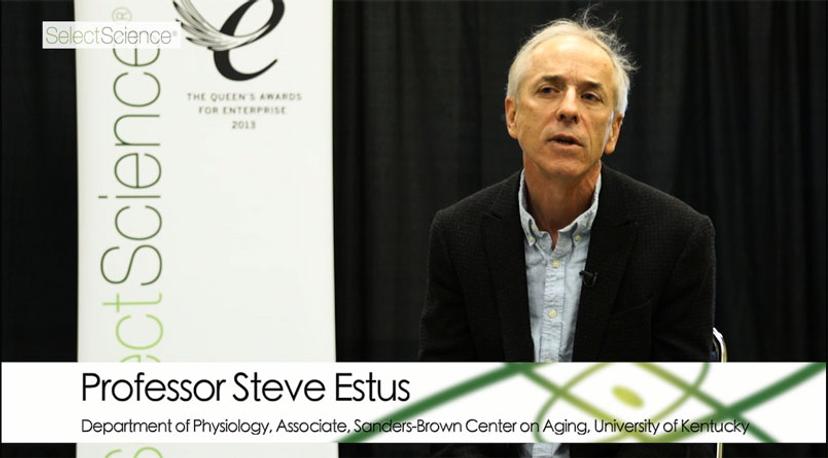Genetics Research Identifies New Target for Alzheimer’s Disease Treatment
Professor Steve Estus discusses innovative research from his lab
14 Jan 2016

Prof Estus of the Sanders-Brown Center on Aging talks about Alzheimer's disease research.
Professor Steve Estus of the Sanders-Brown Center on Aging, at the University of Kentucky, is spearheading research that explores new therapeutic strategies for Alzheimer’s disease treatment. Using molecular genetics techniques that identify Alzheimer’s disease risk genes, the lab has discovered a novel target for prevention and treatment of this serious, neurodegenerative condition.
Prof Estus’s research has focused on understanding genetic risk factors that drive mechanisms underlying Alzheimer’s disease. CD33, one of the risk genes investigated by the group, shows great potential as a novel, therapeutic target for the prevention and treatment of Alzheimer’s disease. As Prof Estus says, “These genetic risk factors have been validated by nature. We know if we inhibit or impact that pathway we can impact Alzheimer’s disease, because it has already been tested by genetics.”
Understanding genetic risk
These genetic risk factors have been validated by nature. We know if we inhibit or impact that pathway we can impact Alzheimer’s disease, because it has already been tested by genetics.
Prof Steve Estus Sanders-Brown Center on Aging
The group found that inhibition of this cell surface protein enhanced phagocytic activity of microglia, resulting in a neuroprotective effect. Ineffective phagocytosis of beta-amyloid protein is proposed as a mechanism for progression of Alzheimer’s related neurodegeneration. Antibodies against CD33 were originally trialed as a treatment for acute myeloid leukemia (AML). Although CD33 antibodies were found to be ineffective for AML treatment, they were shown to be safe, so could be repurposed for an Alzheimer’s disease trial. Preliminary work has already begun on advancing CD33 antibodies as an Alzheimer’s disease therapy, “We’ve shown that the antibodies are efficacious in vitro for knocking CD33 down and I think that this could really be a high-impact approach to reduce the risk of Alzheimer’s disease.”
The scientific strategy of the lab has been to characterize single nucleotide polymorphisms (SNPs) that are robustly associated with the risk of Alzheimer’s disease. This approach exploits the data reported in large-scale genome wide association studies and uses a high-throughput methodology to identify how SNPs modulate amino acid sequences, gene expression or alter mRNA splicing. Prof Estus’s lab have benefited from using molecular genetics techniques that incorporate TaqMan® genotyping systems with Bio-Rad Chromo4™ qPCRs, to identify and characterize risk genes, “We’ve been fortunate to use a BioRad qPCR machine, called a Chromo4. We’ve run literally thousands of samples through that machine, it has worked like a top, when it does occasionally go on the fritz, it is very quick and easy to fix and get back up running again.”
Towards Improving Alzheimer's disease outcomes
This is just one aspect of the innovative research conducted at the Sanders-Brown Center on Aging, where studies range from the microscopic level of the synapse, through animal models and right up to clinical studies. The Center supplies high quality Alzheimer’s brain tissue around the world and has a large cohort of patients available for clinical studies, as Prof Estus says, “this is one of the real strengths of the Center”. The clinical cohort comprises over 600 patients and 600 non-patient controls. In addition to clinical studies, these subjects have agreed to post-mortem brain tissue donation, making this cohort a valuable resource for Alzheimer’s research.
The continuing goal of Professor Estus, and other researchers at the Center, is to conduct ground breaking research on the risk and progression of Alzheimer’s disease risk that can contribute to improved diagnosis, treatment and outcomes for patients.
